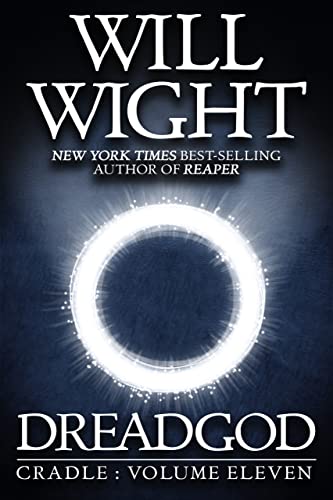 In the Sacred Valley, sacred artists hone body, mind, and spirit to influence the world around them. All except for Lindon, who was born “Unsouled” and forbidden to learn any of the sacred arts. But when the heavens open up and give Lindon a glimpse into a future cataclysm, his path is decided. To save the Sacred Valley, he must leave the Sacred Valley and become strong enough to drive away giants. But just how powerful can a mere “Unsouled” become?
In the Sacred Valley, sacred artists hone body, mind, and spirit to influence the world around them. All except for Lindon, who was born “Unsouled” and forbidden to learn any of the sacred arts. But when the heavens open up and give Lindon a glimpse into a future cataclysm, his path is decided. To save the Sacred Valley, he must leave the Sacred Valley and become strong enough to drive away giants. But just how powerful can a mere “Unsouled” become?
Eleven books later, and Linden is on the verge of becoming a Monarch, a sort of living god too dangerous to remain on Cradle, as his mentor, Eithan Arelius, found out. After Eithan’s ascension, Lindon swears to end the cataclysm that ruined the Sacred Valley. To do that, he must force the Monarchs on Cradle to ascend to the heavens in order to destroy the Dreadgods that ravage his world.
Of course, the Monarchs will not go into the higher realms willingly. So Lindon and his friends must challenge the eight Monarchs and the four Dreadgods for the safety of Cradle.
I admit to having concerns about Will Wight’s choice to take Lindon’s adventures beyond Eithan’s ascension. Because Wight follows the royal road and golden way of shounen manga, it seemed that there was no practical way to continue escalating the stakes as the conflicts in Cradle and the heavens appeared to be resolved by Eithan’s ascension. Dreadgod’s story does not necessarily assuage many of those concerns, but it does hint at how the Cradle series will resolve in its next and final book.
Lindon’s story has always been about saving the Sacred Valley. As a cultivator, he seeks power not for himself but to protect his people, even as those who would be known as his people increase from his village to Cradle itself. This is in direct contrast to the power fantasies of most cultivation stories, where “cultivation is to ascend and break through the bonds of mortality.” But Lindon’s story is not yet finished, for his story is bound up with Eithan’s story. And Eithan’s story is that of a near-god trying to build peers instead of servants.
Eithan currently has few peers, in part because the Monarchs refuse to play their role in nature and ascend to the higher plans. It’s also because few of the Monarchs are concerned with compassion, just power. These few exalted warriors have chosen to reign in Hell instead of serve in Heaven, and the defiance of the natural order has spawn four kaiji Dreadgods that ravage Cradle to this day. And as below, so are the higher realms in chaos. And Eithan needs help there, too.
It will come as no surprise to aficionados of Hirohiko Araki’s Royal Road of manga that the stage is set for Lindon to force the Monarchs to ascend before ascending himself and proving himself worthy as Eithan’s peer. After all, in shounen manga, the protagonist always rises. Dreadgod is about how Lindon gathers enough power to even be a threat to the Monarchs in the first place. And that is by doing what no Monarch is willing to do.
Kill a Dreadgod.
But it is also about what Lindon will do now that his mentor, Eithan, is gone. Wight ties xianxia to character growth throughout the Cradle series, and here is no exception. Lindon must know himself to grow even stronger, as cultivation cannot progress with delusion and deception. And the mutual discovery of internal and external worlds is never over. This keeps the Cradle series from congealing into a mere power fantasy the likes not seen in traditional cultivation series. And here, Lindon must progress rapidly to keep his family, friends, and followers safe from the Dreadgods who have singled him out as the threat of the hour.
The ride of progression, combat, and discovery is worth reading, and worth not spoiling. Wight navigates the heights he has drawn this series to deftly, without letting Lindon fall into the pits of narcissism or selfishness that plague many xianxia cultivation heroes. But I am relieved that the end is in sight, for it is difficult to see where else the story of Cradle can climb.
Please give us your valuable comment